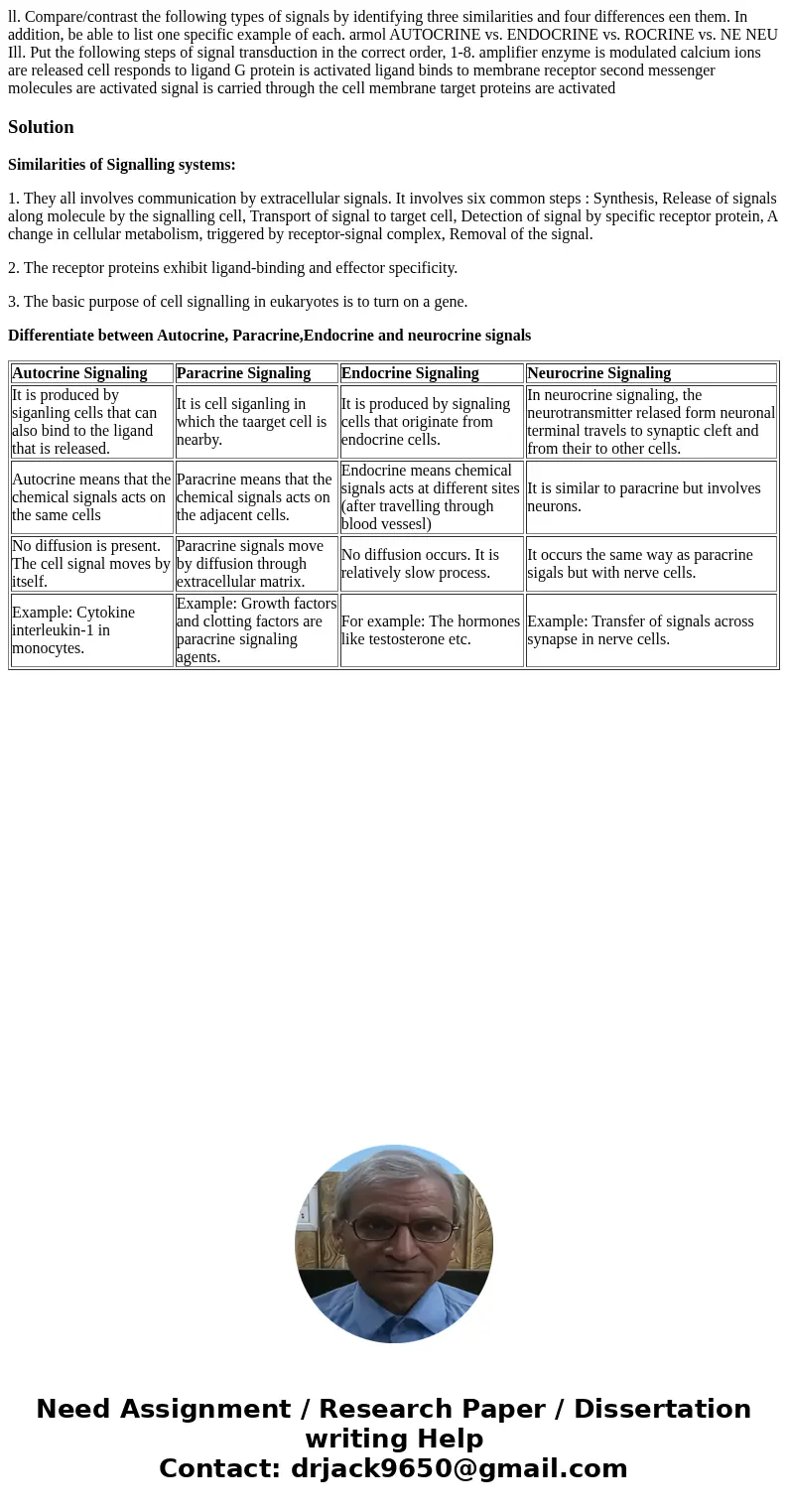ll Comparecontrast the following types of signals by identif
ll. Compare/contrast the following types of signals by identifying three similarities and four differences een them. In addition, be able to list one specific example of each. armol AUTOCRINE vs. ENDOCRINE vs. ROCRINE vs. NE NEU Ill. Put the following steps of signal transduction in the correct order, 1-8. amplifier enzyme is modulated calcium ions are released cell responds to ligand G protein is activated ligand binds to membrane receptor second messenger molecules are activated signal is carried through the cell membrane target proteins are activated

Solution
Similarities of Signalling systems:
1. They all involves communication by extracellular signals. It involves six common steps : Synthesis, Release of signals along molecule by the signalling cell, Transport of signal to target cell, Detection of signal by specific receptor protein, A change in cellular metabolism, triggered by receptor-signal complex, Removal of the signal.
2. The receptor proteins exhibit ligand-binding and effector specificity.
3. The basic purpose of cell signalling in eukaryotes is to turn on a gene.
Differentiate between Autocrine, Paracrine,Endocrine and neurocrine signals
| Autocrine Signaling | Paracrine Signaling | Endocrine Signaling | Neurocrine Signaling |
| It is produced by siganling cells that can also bind to the ligand that is released. | It is cell siganling in which the taarget cell is nearby. | It is produced by signaling cells that originate from endocrine cells. | In neurocrine signaling, the neurotransmitter relased form neuronal terminal travels to synaptic cleft and from their to other cells. |
| Autocrine means that the chemical signals acts on the same cells | Paracrine means that the chemical signals acts on the adjacent cells. | Endocrine means chemical signals acts at different sites (after travelling through blood vessesl) | It is similar to paracrine but involves neurons. |
| No diffusion is present. The cell signal moves by itself. | Paracrine signals move by diffusion through extracellular matrix. | No diffusion occurs. It is relatively slow process. | It occurs the same way as paracrine sigals but with nerve cells. |
| Example: Cytokine interleukin-1 in monocytes. | Example: Growth factors and clotting factors are paracrine signaling agents. | For example: The hormones like testosterone etc. | Example: Transfer of signals across synapse in nerve cells. |

 Homework Sourse
Homework Sourse